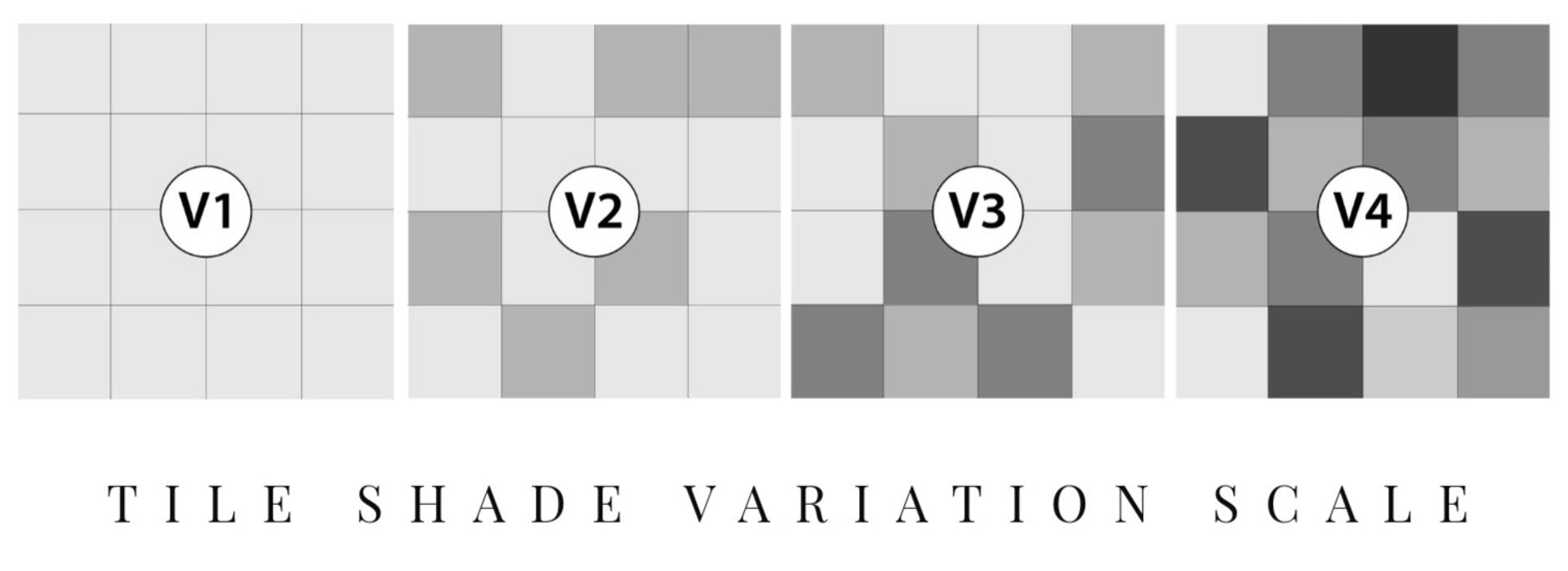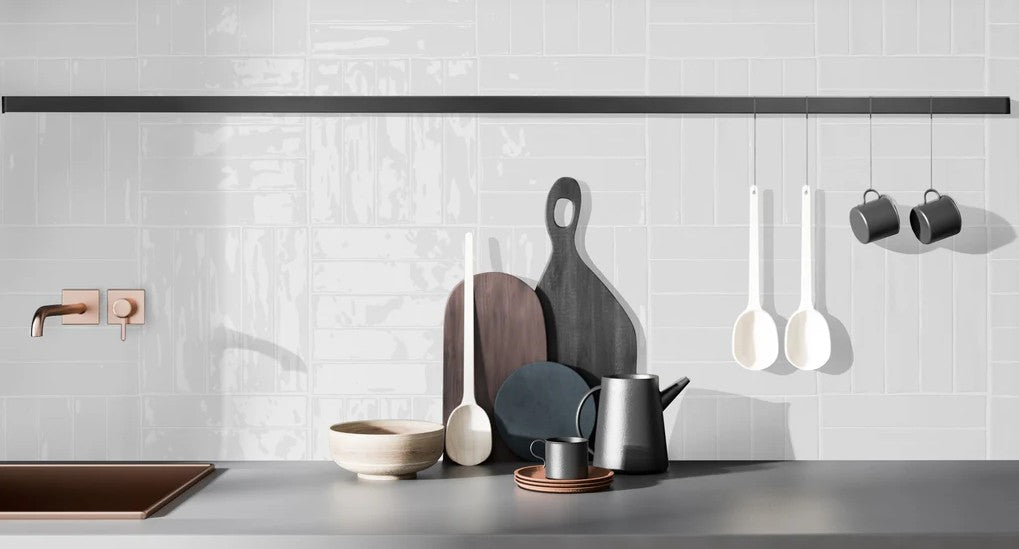Subway tiles might seem like just another design trend, but their story actually started deep beneath the streets of New York in the early 1900s.

Here is the wild part. The original subway tiles were introduced in 1904 as a practical solution for keeping underground stations bright and easy to clean. What surprises most people is these modest rectangles quickly broke out of the subway and became a universal symbol of modern, clean design found in kitchens, bathrooms, and even upscale restaurants across the world.
Table of Contents
- The History And Origin Of Subway Tiles
- Characteristics That Define Subway Tiles
- The Aesthetic And Functional Importance Of Subway Tiles
- Common Applications In Modern Interiors
- Choosing The Right Subway Tile For Your Project
Quick Summary
| Takeaway | Explanation |
|---|---|
| Subway tiles originated in NYC’s subway system. | They were first used in 1904, designed for durability and easy maintenance in transit stations. |
| Versatile for various design applications. | Subway tiles can be used in kitchens, bathrooms, and commercial spaces due to their aesthetic and functional qualities. |
| Standard dimensions enhance installation options. | Typically measuring 3" x 6", their size allows multiple patterns, including herringbone and stacked arrangements. |
| Glazed ceramic ensures low maintenance. | The non-porous surface is stain-resistant and easy to clean, ideal for high-traffic areas. |
| Color and finish impact visual appeal. | Choices between matte and glossy finishes can significantly alter a space’s atmosphere and perceived size. |
The History and Origin of Subway Tiles
Subway tiles have a fascinating architectural history that traces back to the early 20th century, emerging as a practical and visually appealing solution for urban transportation infrastructure. Their origin story is deeply intertwined with the development of New York City’s underground transit system and urban design principles of the time.
The Birth of a Design Icon
The subway tile concept originated in the early 1900s when the New York City subway system was being constructed. Architectural Digest reports that these ceramic tiles were first introduced in 1904 during the initial subway station construction, designed to create clean, bright, and easily maintainable surfaces. The original tiles were white, rectangular, and glazed, featuring a simple yet elegant design that could withstand heavy traffic and frequent cleaning.
Key characteristics of these original subway tiles included:
- Rectangular shape with standard dimensions
- Bright white glazed ceramic material
- Smooth, easy-to-clean surface
- Ability to reflect light and create a sense of spaciousness
Evolution Beyond Transportation
What began as a purely functional design for subway stations quickly transcended its original purpose. Architects and interior designers recognized the versatility and aesthetic appeal of subway tiles, gradually incorporating them into residential and commercial spaces. The tiles became popular in kitchens, bathrooms, and other areas where durability and easy maintenance were crucial.
The subway tile meaning expanded from a utilitarian transit system element to a design statement that represented cleanliness, modernity, and simplicity. Its geometric precision and understated elegance made it a favorite among designers seeking a timeless yet contemporary look. Throughout the 20th century, subway tiles underwent numerous transformations in size, color, and arrangement, but maintained their core characteristics of simplicity and functionality.
To help you quickly compare the materials, finishes, and standard attributes of subway tiles discussed in the article, here is a table summarizing their defining features.
| Attribute | Description |
|---|---|
| Shape & Size | Rectangular; typically 3" x 6" |
| Thickness | 3/8" to 1/2" (thin profile) |
| Material | Classic: Ceramic; Modern: Porcelain, Glass, Natural Stone |
| Surface Finish | Glossy (traditional), Matte (contemporary), Textured options |
| Color Options | Originally white; now available in various colors |
| Maintenance | Non-porous, stain-resistant, easy to clean |
| Installation Patterns | Offset, Stacked, Herringbone, Vertical, etc. |
Characteristics that Define Subway Tiles
Subway tiles are distinguished by a specific set of design principles and physical attributes that have made them a timeless architectural element. Understanding these characteristics provides insight into why these tiles have remained popular across decades of design evolution.

Standardized Dimensional Proportions
The National Tile Contractors Association defines subway tiles by their traditional rectangular shape, typically measuring 3 inches by 6 inches. This classic proportion creates a clean, orderly visual appearance that adapts seamlessly to various architectural styles. The rectangular format allows for multiple installation patterns, including horizontal, vertical, and herringbone arrangements, giving designers significant creative flexibility.
Key dimensional characteristics include:
- Standard 3" x 6" rectangular format
- Thin profile typically between 3/8" to 1/2" thick
- Glazed ceramic composition
- Smooth, uniform surface texture
Material and Surface Qualities
Traditionally, subway tiles are crafted from ceramic, featuring a glossy glazed finish that provides exceptional durability and easy maintenance. The glazed surface creates a reflective quality that helps brighten spaces and repel moisture. While white remains the most iconic color, contemporary design has expanded the palette to include various colors and finishes.
The material composition ensures that subway tiles are not just aesthetically pleasing but also highly functional. Their non-porous surface resists staining, makes cleaning simple, and provides excellent hygienic properties for spaces like kitchens and bathrooms. Learn more about our tile design options to explore the versatility of modern subway tile variations.
Installation and Design Versatility
What sets subway tiles apart is their remarkable adaptability. The standardized dimensions and classic design allow them to complement both traditional and contemporary interior aesthetics. Designers can create visual interest through various laying patterns like offset, stacked, or herringbone, transforming a simple tile into a dynamic design element. This versatility explains why subway tiles continue to be a preferred choice for residential and commercial spaces seeking a timeless yet adaptable design solution.
The Aesthetic and Functional Importance of Subway Tiles
Subway tiles represent far more than a simple decorative surface. They embody a unique intersection of design philosophy, practical engineering, and architectural innovation that transcends their original transportation infrastructure roots.
Design Versatility and Visual Impact
Interior Design Magazine highlights that subway tiles offer unprecedented design flexibility. Their clean lines and minimalist aesthetic allow them to seamlessly integrate into diverse architectural styles, from vintage industrial spaces to contemporary minimalist interiors. The simple rectangular shape becomes a powerful design tool, enabling designers to create visual rhythms and textures through strategic placement and arrangement.
Key aesthetic advantages include:
- Ability to create visual continuity in spaces
- Capacity to reflect light and enhance spatial perception
- Adaptability to multiple color schemes and design narratives
- Potential for creating complex geometric patterns
Functional Performance and Durability
Beyond their visual appeal, subway tiles deliver exceptional functional performance. Their glazed ceramic composition provides remarkable resistance to moisture, stains, and bacterial growth, making them ideal for high-traffic and humidity-prone environments like kitchens and bathrooms. Explore our detailed tile design options to understand the extensive range of functional tile solutions available.
The non-porous surface of subway tiles ensures easy maintenance and longevity. Their smooth finish allows for quick cleaning, preventing dirt accumulation and maintaining a hygienic environment. This combination of aesthetic elegance and practical durability explains their enduring popularity among homeowners, architects, and interior designers.
Psychological and Spatial Transformation
Subway tiles possess a unique ability to psychologically transform spaces. Their clean, uniform appearance can make rooms feel larger, brighter, and more organized. The repetitive geometric pattern creates a sense of order and calm, contributing to the overall sensory experience of an interior environment. Whether used as a full wall covering or a subtle accent, subway tiles have the power to dramatically alter a space’s perceived dimensions and emotional atmosphere.
Common Applications in Modern Interiors
Subway tiles have transcended their original architectural purpose, becoming a versatile design element that transforms contemporary interior spaces. Their adaptability and aesthetic appeal make them an exceptional choice for multiple residential and commercial applications.
Kitchen Design Innovations
Architectural Digest reveals that subway tiles have become a cornerstone of modern kitchen design. Homeowners and designers utilize these tiles as backsplashes, creating visual interest while providing a functional, easy-to-clean surface. The classic white subway tile remains popular, but contemporary trends embrace bold colors and unique laying patterns that add personality to kitchen spaces.
Key kitchen application strategies include:
- Creating seamless backsplash designs
- Defining cooking and preparation zones
- Adding texture and depth to minimalist kitchen layouts
- Protecting walls from cooking splashes and moisture
Bathroom Transformation Techniques
In bathroom design, subway tiles offer remarkable versatility. They can cover entire walls, creating a clean and cohesive look that makes spaces feel larger and more sophisticated. The tiles work equally well in shower enclosures, bathroom walls, and floor applications. Explore our contemporary tile design options to discover innovative ways to incorporate these versatile tiles.
The non-porous surface of subway tiles makes them ideal for high-moisture environments, preventing mold and mildew growth while maintaining a pristine appearance. Designers often experiment with vertical and horizontal laying patterns, herringbone arrangements, and color combinations to create unique visual experiences.
Commercial and Public Space Applications
Beyond residential settings, subway tiles have found significant use in commercial environments. Restaurants, hospitals, schools, and public buildings appreciate their durability, ease of maintenance, and timeless aesthetic. The tiles can withstand heavy traffic, frequent cleaning, and provide a hygienic surface that meets stringent design and safety requirements. Their ability to reflect light and create a sense of openness makes them an excellent choice for spaces seeking to appear clean, modern, and welcoming.
The following table organizes the most common modern interior applications for subway tiles and highlights the unique benefits or use cases for each area, making it easy to see how subway tiles perform in different settings.
| Application Area | Key Benefits / Uses |
|---|---|
| Kitchens | Backsplashes, easy to clean, defines cooking zones, adds texture |
| Bathrooms | Covers walls and showers, prevents mold, expands space visually |
| Commercial/Public Spaces | Durability, hygiene, easy maintenance, enhances perceived cleanliness |
| Restaurants | Reflects light, visual appeal, manages heavy use |
| Hospitals & Schools | Meets hygiene standards, withstands frequent cleaning |

Choosing the Right Subway Tile for Your Project
Selecting the perfect subway tile involves more than aesthetic preferences. It requires careful consideration of multiple factors that impact both the visual appeal and long-term performance of your design project.
Material and Composition Considerations
Home Design Magazine emphasizes that material selection is crucial when choosing subway tiles. Ceramic remains the traditional choice, offering durability and affordability, while porcelain provides enhanced moisture resistance. Glass tiles introduce a modern, reflective quality, and natural stone options like marble can add luxury and unique texture.
Key material evaluation criteria include:
- Moisture absorption rate
- Surface durability rating
- Recommended installation locations
- Maintenance requirements
- Cost per square foot
Color and Finish Selection Strategies
The color and finish of subway tiles dramatically influence a space’s visual atmosphere. White tiles create a classic, clean look, while colored or textured tiles can introduce personality and depth. Matte finishes offer a contemporary, understated aesthetic, whereas glossy surfaces maximize light reflection and create an illusion of expanded space. Explore our curated tile design collections to discover innovative color and finish options that match your design vision.
Installation Environment and Performance Factors
Understanding the specific environmental conditions of your project is critical. High-moisture areas like bathrooms and kitchen backsplashes require tiles with superior water resistance and minimal porosity. Commercial spaces demand tiles that can withstand heavy foot traffic and frequent cleaning. Consider factors such as slip resistance, grout compatibility, and potential exposure to temperature fluctuations when making your final selection. Consulting with design professionals can help you navigate these technical considerations and ensure your subway tile choice meets both aesthetic and functional requirements.
Turn Subway Tile Inspiration Into Reality With TileChoices.com
Are you ready to move from understanding the classic meaning of subway tiles to actually creating timeless spaces in your own home or projects? This article explored how subway tiles represent more than just a surface—they are about simplicity, durability, and the power to personalize kitchens, bathrooms, and commercial environments. If you have struggled to find tiles that balance practical needs and unique design preferences, you are not alone. Choosing the right tile can feel overwhelming when you need clean lines, easy maintenance, and the perfect color or finish to suit your vision.

Make your design ideas real with TileChoices.com, where you can explore our extensive collections and find subway tiles in ceramic, porcelain, glass, and more. Visit our product gallery or check out our inspirational options to discover materials that match your needs right now. Do not settle for uncertainty in your renovation—get expert support, order samples online, and let your subway tile journey start today at TileChoices.com.
Frequently Asked Questions
What are subway tiles?
Subway tiles are rectangular ceramic tiles, typically measuring 3 inches by 6 inches, originally designed for subway stations. They are known for their glossy finish, durability, and easy maintenance, making them popular in both residential and commercial spaces.
What are the advantages of using subway tiles in home design?
Subway tiles offer versatility in design and can seamlessly integrate into various styles. Their non-porous surface provides excellent resistance to stains and moisture, making them ideal for high-traffic areas like kitchens and bathrooms. They also enhance light reflection, making spaces appear brighter and more spacious.
How do I properly install subway tiles?
Installation of subway tiles typically involves preparing the surface, applying adhesive, and placing the tiles in your desired pattern. It’s important to ensure uniform spacing using tile spacers and a level to maintain straight lines. For optimal results, consider consulting a professional installer, especially for complex layouts.
Can subway tiles be used in outdoor spaces?
While subway tiles can be used in outdoor spaces, it’s essential to choose tiles specifically designed for exterior use. They should have a high resistance to moisture and temperature changes. Porcelain subway tiles are often preferred for outdoor applications due to their durability and resistance to the elements.
Recommended
- Mini Dolphin Light Blue Porcelain Mosaic Tile | Pool & Spa Rated – Tile Choices
- Woodland Collection Evening Birch 2” Hexagon Recycled Glass Tile – Tile Choices
- Myorka 4 x 4 Blue Ceramic Tile | Satin Finish – Tile Choices
- Abstract Collection ABS-6006 Graphite Hexagon Tile – Terrazzo, 8" x 9" – Tile Choices









